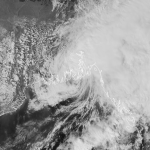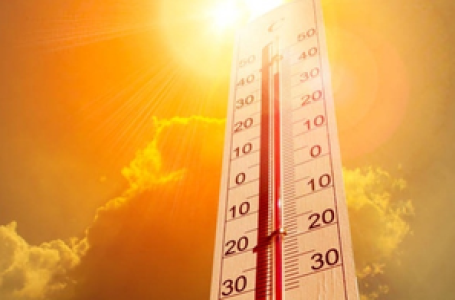Feb 4, 2019
New Delhi: The unusually cold weather in the hill states of North India and parts of the plains, including the national capital, has been indirectly caused by the Polar Vortex that usually spins over the North Pole and is currently sweeping across large parts of the US and Canada that is pushing various weather systems downwards, experts say.
“There is no direct relation between the Polar Vortex and Indian weather but the Arctic winds are pushing various weather systems, including the western disturbance, downwards. It has indirectly resulted in severe and extended winters. The intensity and frequency of western disturbance have also increased,” Mahesh Palawat, vice president of Meteorology and Climate Change at private forecaster Skymet, told IANS, adding that this would continue toll mid-Februay
Noting that frequency and intensity of the western disturbances (WDs) were very high this time around, he said India has already witnessed six such instances so far which have resulted in heavy to moderate snowfall.
“One more will come this week and more snowfall is expected. Usually, the disturbance started moving to upper latitudes by January-end. But this time, due to the western disturbance, the temperature in Rajasthan, MP, Maharashtra and Telangana has also gone down.
“This can be considered as the indirect effect of Polar Vortex. The cold will continue till mid-February,” Palawat added. The coldest place in the Valley this winter, as in the past, was Kargil at minus 16 degrees Celsius.
D.S.Pai, head of climate research and services division of the IMD Pune, largely concurred.
“It not actually the Polar Vortex that affects our climate in J&K and central India. It is the weakening of the mid-latitude Westerlies resulting in Southwest shift of the WD activities causing above normal snowfall and precipitation over northern India including J&K. It also results in below normal temperatures over northern and central India.
“Actually the weakening of the Westerlies is not only seen over Indian region only. It is also seen over other parts of the globe,” Pai explained.
Shimla-based India Meteorological Department (IMD) Director Manmohan Singh concurred.
“In January and February, on an average five western disturbances are normally active in the Himalayan region each month. After a long gap, we are seeing the occurrence of western disturbances in the state one after another this time and their occurrence is also timely and widespread,” Manmohan Singh told IANS, adding that the coldest place in Himachal Pradesh this winter was Keylong at minus 15 degrees Celsius around the same as in previous years.
And the weather disturbances have been active in the region every third or fourth day this year.
Another weather disturbance may be active north India by Monday evening, with its impact largely seen on February 7.
“We are expecting heavy spells of snowfall in the western Himalayan region, comprising Jammu and Kashmir, Himachal Pradesh and Uttarakhand, on February 7,” Manmohan Singh added.
As for Punjab and Haryana, though the winter has been largely normal in most parts in December and January, the snowfall in Himachal Pradesh and Jammu and Kashmir has extended the winter chill this time.
In Malerkotla town in Punjab’s Sangrur district, there was a virtual “snowfall” on January 23. Some areas received over one foot of hail early in the morning. As the weather cleared, a white mantle of “snow” could be seen on the roads, outside houses and in some agricultural fields.
In Chandigarh and adjoining towns of Panchkula and Mohali, dense fog was experienced within the city limits after 3-4 years, taking residents by surprise and giving increasing the chill factor.
However, Vikram Singh, Director of the Meteorological Centre at Dehradun, did not find any significant abnormality in the heavy snowfall in the past fortnight in the Himalayan region of Uttarakhand.
“Yes, the snowfall was heavy this season and lashed at even some places which were at low altitudes such as Malti in Uttarkashi district. But I find no abnormality. Even in 2013, we had received good snowfall at Mussoorie and other areas,” Vikram Singh told IANS.
He, however, declined to comment on the Polar Vortex.
Old timers in the hills expressed similar views. Dr. R S Rawal, who heads the Pandit Gobind Pant Himalayan Environment and Development Institute at Almora, did not find any distinct change in the weather phenomenon this year.
“This time, there was no snowfall in Almora. But eight years ago, we had plenty of snowfall at Almora,” Dr. Rawal said, adding: “I don’t know much about the Polar Vortex,” he said.
The northeast has been left untouched by the Polar Vortex, which according to an official had an impact in North India.
“There is no impact of the Polar vortex in the northeastern states. We are experiencing the usual weather. The impact of the Polar Vortex impact is seen in Delhi, J&K and uttrakhand, Anil Shaw of the Guwahati Met Office told IANS.



















